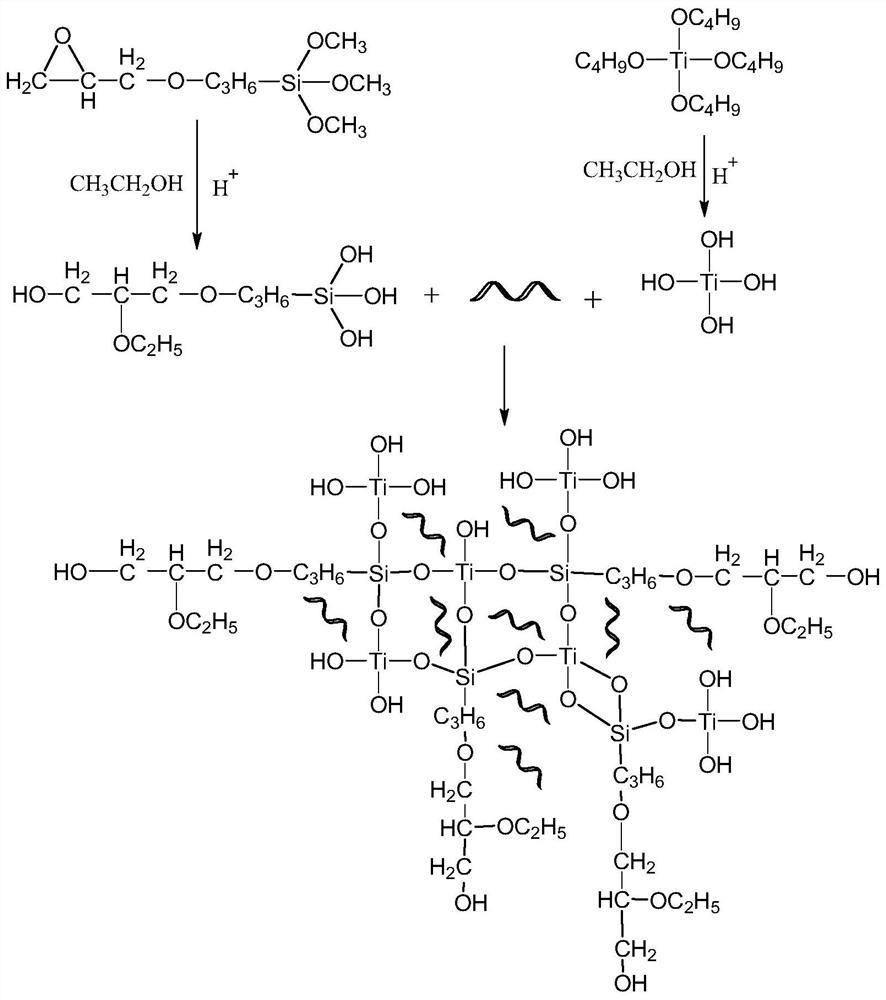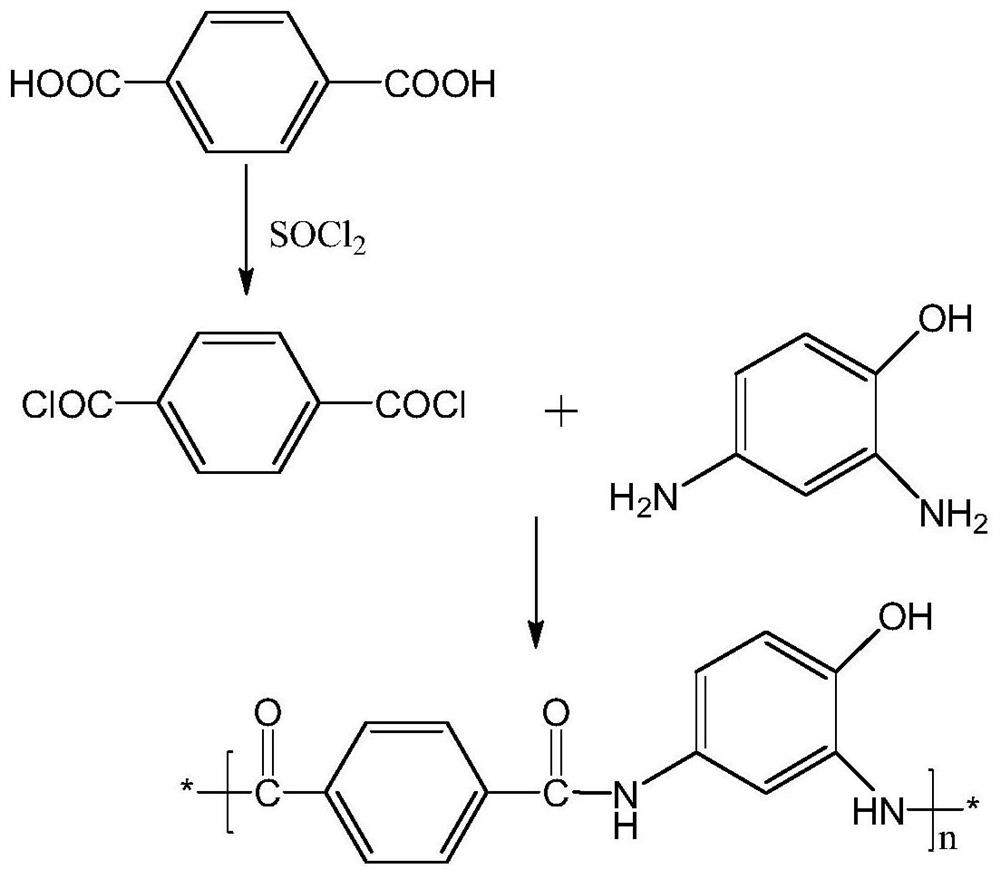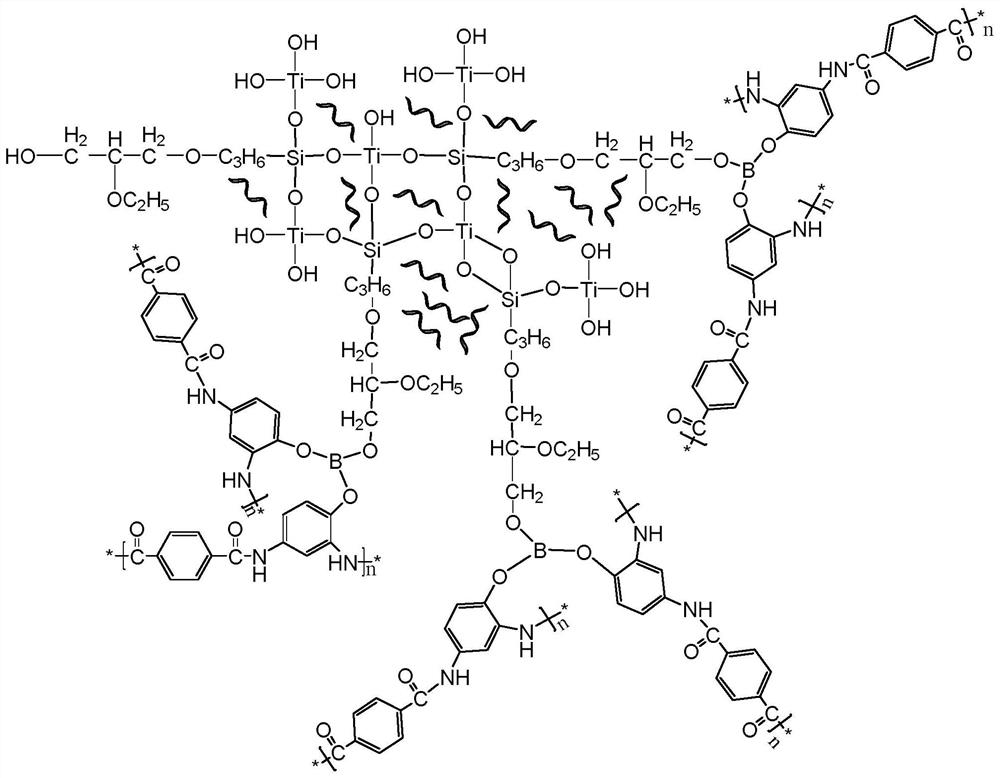A kind of stain-resistant nano clothing fabric and its preparation method
A kind of fabric and stain-resistant technology, which is applied in the field of clothing fabrics, can solve the problems of reduced stain resistance and reduced stain resistance, and achieve the effects of improving stain resistance, high hydrophobic stain resistance, and solving low stain resistance
- Summary
- Abstract
- Description
- Claims
- Application Information
AI Technical Summary
Problems solved by technology
Method used
Image
Examples
Embodiment 1
[0033] The specific preparation process of composite blended cellulose acetate is as follows:
[0034] Step 1: Add 1kg of γ-(2,3-glycidoxy)propyltrimethoxysilane and 10L of absolute ethanol into the reaction vessel, raise the temperature to 60°C for reflux reaction for 2 hours, and add hydrochloric acid to it at the same time to control the concentration of the reaction solution. pH=2, obtain silica gel solution;
[0035] Step 2: Dissolve 1kg of cellulose acetate in 10L of acetone, add the dissolved cellulose acetate solution into the reaction vessel, add 5.6kg of silica colloid solution and 0.3kg of dibutyltin dilaurate to it at the same time, stir and mix and heat up to 70°C , then add 0.61kg tetrabutyl titanate to the reaction vessel, and add hydrochloric acid therein to adjust the pH=3 of the solution, control the temperature to keep the reflux reaction for 4-5h, and obtain a viscous composite fiber colloid solution;
[0036] Step 3: Pour the viscous composite fiber collo...
Embodiment 2
[0043] The specific preparation process of composite blended cellulose acetate is as follows:
[0044] Step 1: Add 1kg of γ-(2,3-glycidoxy)propyltrimethoxysilane and 12L of absolute ethanol into the reaction vessel, raise the temperature to 60°C for reflux reaction for 2 hours, and add hydrochloric acid to it at the same time to control the concentration of the reaction solution. pH=2, obtain silica gel solution;
[0045] Step 2: Dissolve 1kg of cellulose acetate in 10L of acetone, add the dissolved cellulose acetate solution into the reaction vessel, add 5.8kg of silica colloid solution and 0.3kg of dibutyltin dilaurate to it at the same time, stir and mix, then heat up to 70°C , then add 0.63kg tetrabutyl titanate to the reaction vessel, and add hydrochloric acid therein to adjust the pH=3 of the solution, control the temperature to keep the reflux reaction for 4-5h, and obtain a viscous composite fiber colloid solution;
[0046] Step 3: Pour the viscous composite fiber col...
Embodiment 3
[0053] The specific preparation process of composite blended cellulose acetate is as follows:
[0054] Step 1: Add 1kg of γ-(2,3-glycidoxy)propyltrimethoxysilane and 10L of absolute ethanol into the reaction vessel, raise the temperature to 60°C for reflux reaction for 2 hours, and add hydrochloric acid to it at the same time to control the concentration of the reaction solution. pH=2, obtain silica gel solution;
[0055] Step 2: Dissolve 1kg of cellulose acetate in 10L of acetone, add the dissolved cellulose acetate solution into the reaction vessel, add 3.5kg of silica colloid solution and 0.3kg of dibutyltin dilaurate to it at the same time, stir and mix, then heat up to 70°C , then add 0.41kg tetrabutyl titanate to the reaction vessel, and add hydrochloric acid therein to adjust the pH=3 of the solution, control the temperature to keep the reflux reaction for 4-5h, and obtain a viscous composite fiber colloid solution;
[0056] Step 3: Pour the viscous composite fiber col...
PUM
 Login to View More
Login to View More Abstract
Description
Claims
Application Information
 Login to View More
Login to View More - Generate Ideas
- Intellectual Property
- Life Sciences
- Materials
- Tech Scout
- Unparalleled Data Quality
- Higher Quality Content
- 60% Fewer Hallucinations
Browse by: Latest US Patents, China's latest patents, Technical Efficacy Thesaurus, Application Domain, Technology Topic, Popular Technical Reports.
© 2025 PatSnap. All rights reserved.Legal|Privacy policy|Modern Slavery Act Transparency Statement|Sitemap|About US| Contact US: help@patsnap.com



